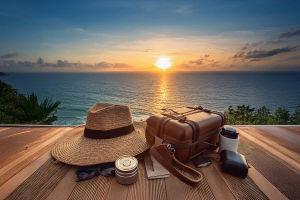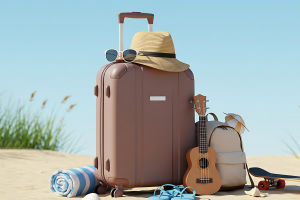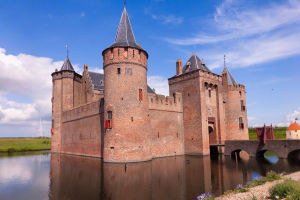You don't stumble into Chefchaouen by accident. It's not on the way to Morocco's desert or along the main tourist trail. And maybe that's part of the charm. You choose to go there—to chase that dream of walking through winding alleys painted entirely in shades of blue.
But what most people don't realize is that beyond the beautiful photos, Chefchaouen offers something quieter, deeper, and worth staying a little longer for.
If you're thinking of visiting—or if you're still wondering whether it's worth the detour—this guide will break down the specific experience of being there, and how to make the most of it.
1. The Blue Paint Isn't Just for Show
Yes, almost every wall, step, and window frame in Chefchaouen is covered in blue. But it's not just a design choice—it's a living habit.
✔ The Tradition: Locals repaint the walls several times a year, especially before major holidays. Originally, the blue was said to keep mosquitoes away or symbolize the sky and heaven. But today, it's a source of pride.
✔ Traveler Tip: Visit early in the morning when painters are out refreshing the walls. You'll not only avoid crowds but also capture fresh, vivid blues in soft morning light.
✔ Photography Hack: Don't just shoot wide angles. Look for tiny scenes: a blue staircase with a pair of red slippers, or a cat napping in a painted doorway. These tell better stories than the big-picture shots everyone takes.
2. It's Walkable—But You'll Still Get Lost
Chefchaouen's medina (old town) is compact, car-free, and intentionally confusing. The maze of alleys was originally designed to slow down invaders, but today it just slows down tourists—and that's not a bad thing.
✔ Navigation Tip: Use offline maps, but also ask shopkeepers if you're turned around. They're used to helping and will point you in the right direction without expecting tips.
✔ Realistic Time Plan: Don't rush it. Give yourself at least 2 full days here. The charm is in the wandering.
3. Where You Stay Changes the Experience
Accommodations in Chefchaouen are as much a part of the experience as the town itself. Riads (traditional Moroccan guesthouses) offer tiled courtyards, rooftop views, and deep local charm.
✔ Where to Stay:
• Dar Echchaouen: Near the entrance of the medina with views of the valley, ~$80/night.
• Casa Perleta: Cozy riad in the heart of the blue zone, ~$60/night.
4. Real Food, Real Simple
Chefchaouen isn't about fine dining, but it is about comfort food made from scratch. Many places don't even have printed menus—you just ask what's fresh.
✔ Must-Try Dishes:
• Vegetable tagine: Cooked in clay pots, usually $4–$6
• Harira soup: Rich lentil-tomato base, perfect in the evening, $4–$5
• Homemade bread: Served warm with olive oil and olives, $3
✔ Budget Tip: Street food is limited, but local cafés offer filling meals for $3–$5. Sit on the terrace and take your time.
5. How to Get There (Without Losing Patience)
This is the one tricky part. Chefchaouen doesn't have a train station or airport, so all routes involve road travel—but it's doable.
✔ From Tangier: The most common route.
• Shared taxi: ~$8 per person (about 2.5–3 hours)
• CTM bus: ~$7, air-conditioned and comfortable
✔ From Fes: About 4.5 hours by bus, ~$9. Book in advance via CTM or local station.
✔ Tip: Try to arrive before dark. Chefchaouen's charm is in its light—and the streets are dimly lit at night.
6. When to Go (And When Not To)
Avoid peak summer (July–August)—the heat can be stifling, and many locals leave for cooler areas. The best times?
✔ Spring (March–May): Blooming flowers, mild temperatures, and bright skies.
✔ Fall (September–October): Warm days, cool nights, and fewer tourists.
✔ Opening Hours: Most shops in the medina open from 10 a.m. to 8 p.m., but mornings (7–9 a.m.) are best for peaceful walks and soft photography light.
Chefchaouen is not about big bucket list moments. It's about slowing down, noticing small things, and letting yourself get lost in a place that somehow feels real and unreal at the same time.
So, what do you think—would you make the journey to the Blue Pearl? Or have you already been and found a secret corner that took your breath away? Share your thoughts, your favorite shots, or that one moment that made it all worth it. Maybe you'll inspire someone else's trip.


